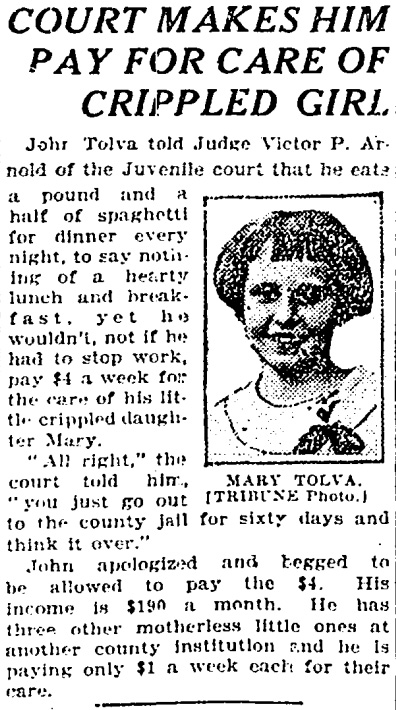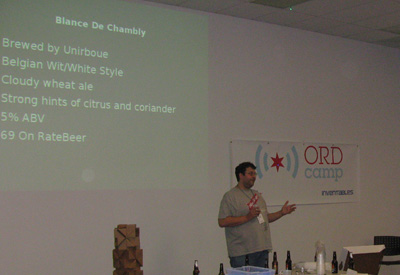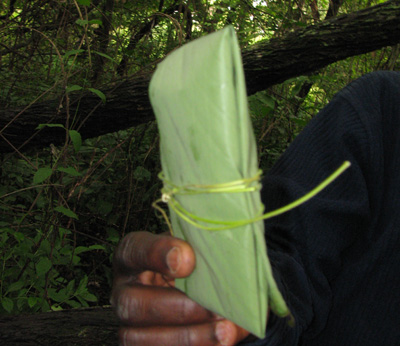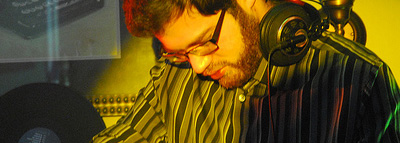Did a panelist just say bestiality?
So, the panel I moderated at SXSW went exceedingly well. That’s what happens when you stack the deck with smart, witty, quotable peeps. I was honored to be up there with them.
We projected the #sxswbeast feed for the audience in real time to get a sense of the mood and questions. In lieu of the podcast of the talk (which has not yet been posted) you can thumb through the feed and get a pretty damn good idea of the meat of the talk. The Hive Mind as Cliffs Notes.
Here’s a Wordle cloud of all the tweets that came in. Click for larger. (Find the suppository!)
In another vein is this visualization from Social Collider. It shows lateral connections between Twitter conversations. The vortex at the middle represents all the different audience conversations happening during the talk. But the interesting bits are the lines that shoot out to the left and right, like the rings of Saturn. These represent similarities to other tweets taking place at the same time. Most are from SXSW itself so the graph is, in a way, a snapshot of thematic resonance at the conference between sessions. The more horizontal the line, the more simultaneous the discussion.
Here’s the visualization. Click for larger.
Slightly humorous is that one of the tweets was about the book Orbiting the Giant Hairball — a classic on the topic of corporate entrepreneurship. Hairball indeed!
Straight from T. Herman Zweibel
While on the hunt for my family’s local history I was helpfully pointed to the online archive of the Chicago Tribune. It is an amazing resource and one hell of a timesuck. Half the time it feels like you’re reading the Onion; the other half makes you realize just how far newspapers have fallen as the organ of record for society.
I stumbled upon this bizarre blurb from Oct. 14, 1920, back when the Trib was known as the Chicago Daily Tribune (“The World’s Greatest Newspaper,” apparently). It reads like some kind of personal alternate universe.

That John Tolva sure was an ass.
Note that I too have three children, though they are thankfully not motherless. Also, I do not eat a pound and a half of spaghetti each night.
1903
Departure
On the train to Naples the old ladies in black thought she was menstruating when she asked them for help disposing the bloody cloth. She let them think so. The train was cramped when they left Barile, but when it picked up passengers in Potenza it filled so full you merely leaned into others to maintain balance. It was not the place to make a public fuss over a choleric baby.
Living in a big, old city like Chicago is a four-dimensional experience. You move around the street grid, up high into skyscrapers, down into the underbelly of subway tubes, but time too is layered into the built things, seen only if you are looking, meshed into the streetscape like a discolored piece of gum that’s just another part of the sidewalk. Until you look more closely at it.
The baby hadn’t made a noise since they arrived at the port. He was swaddled up against Grazia tight enough that she’d feel it if his shallow breaths stopped. She sat down on the steamer trunk. Giuseppe, unsure which ship was theirs, barreled chest-first into the noisy confusion of Neapolitan seamen, stevedores, travelers, and common thieves. Grazia attempted to nurse, but she couldn’t let down. The baby had not taken milk in eight days.
I knew that my great-grandparents had come to live in Chicago in the same way I know Mrs. O’Leary and Al Capone and Saul Bellow lived here — and with about as much tangible connection to same. Certainly I had occasion to think of their lives. Three times in 14 years I had trekked to their village in poor, arid southern Italy, learning a bit more each time, eventually being welcomed by their hometown as one of their own. And that was part of the problem. I could connect with them in Italy, but not here, in the town where they started a new life and became American.
Gibraltar was still in sight when baby Michele died. There were no facilities to keep his body on board. An Arbëreshë steward who heard his own strange accent echoed in the parents’ sobbing drew Giuseppe close, felt the bitter waft of Amaro Lucano on the big man’s breath, and told him that he could not emigrate with a corpse. Michele, tightly bound and ballasted, was lowered gently into the waves. Grazia heaved somewhere in a mass of ladies in black and rosaries. Giuseppe changed some of his dollars for lire and drank it away.
I had gone searching before, just before the last trip to Italy. I started at the end, hunting with my kids for a nondescript tomb marker. We found Giuseppe, buried Joseph Tolva, on a sweltering summer day that gave way to a torrential storm just as we found the house he lived in when he registered for World War I in 1915. But these were milestones only. Markers of events, not the experience of a life. I had the records from Italy, the scraps of US government documents from the period, even a few photographs, but what most eluded me was Giuseppe’s connection to my city.
They had argued about taking the baby to America as sick as he was, but the passage was paid, the job was arranged, and the padrone was waiting in Chicago. There would not be a second chance. On July 28, 1903, nine days after they lost the only thing of importance they brought from Italy, Giuseppe and Grazie Tolve arrived in New York City. Three lines, one of them crossed out, on the ship manifest marked their entry. Giuseppe admitted to carrying $25 and told the agent they were bound for one Rocco Calandriello Jr. at 50 Blue Island Ave., Chicago.

Arrival
That name and that address have perplexed me for years. None of my living relatives had heard of Rocco Calandriello, Ancestry.com had too many records to be useful, and 50 Blue Island Ave wasn’t an address that existed anymore. I considered it a dead end.
A few weeks ago at a conference I met Dennis McClendon, a professional mapmaker from Chicago. I casually mentioned that I knew that streets had been renumbered earlier last century but that I had gotten no further. Dennis cleared up my confusion in the span of about 15 minutes. On his laptop he brought up a scan of the 1909 document detailing all the renumbered buildings. Six years after Giuseppe and Grazia arrived 50 became 707 Blue Island Ave.

Blue Island Avenue covered in snow, with stores on either side, pedestrians on the sidewalk and horse drawn vehicles in the street, 1907. Source: Chicago Historical Society

Source: Sanborn Fire Insurance Maps of Chicago
Of course, the building could have been something vastly different in 1903, though it is marked as a business rather than a residence from as early as 1886. My guess is that Rocco Calandriello really was Giuseppe’s uncle, though an uncle through marriage, but what he did and why he did it at 50 Blue Island Ave. is not something the documents tell us.
Before I could inform Dennis that Google Maps still couldn’t locate 707 Blue Island Ave. he noted that part of that street had been demolished in the 60’s to make space for the University of Illinois at Chicago campus — the very campus the conference we were attending was being held on!
We overlaid the pre-destruction map on current satellite photography of the area and had a lock. I was out the door with my camera before I could even say thanks.
Blue Island Avenue is one of a handful of diagonal streets in Chicago, cutting southwest to northeast into the city center. Before the university was built it ended at Harrison Street; now it stops at Roosevelt Rd. Interestingly — and helpfully — the campus layout largely preserves the outline of the original thoroughfare. The gum you notice on the sidewalk only when you step in it.

I’m pretty sure this is where 50 Blue Island Avenue once stood. Coincidentally, this spot is a few hundred feet from where Jane Addams’ Hull House now resides, having been moved from its original location during the UIC construction. Given that recently-arrived Italians constituted a major slice of the neighborhood that Hull House served it is almost impossible to think that Giuseppe and Grazia did not receive assistance from Addams.

I didn’t find Rocco and of course the building is gone, but I tramped around the Near West Side on a few Saturdays and came to know the area of town my great-grandparents called home. It grounded something for me, fleshed out another dimension of my personal relationship to the urban space. And set the stage for 1909.
By southwest
Last year’s travel almost sent me to an early grave and I’m earnestly trying to scale back this year. But there are some destinations I can’t bring myself to skip. Like South by Southwest.
I’m particularly excited about this year’s event, mostly because the panelists on the talk I’ll be moderating are so damn interesting.
- Irene Au, Director of User Experience, Google
- Chris Bernard, User Experience Evangelist, Microsoft
- Moshe Tamssot, Vice President, New Services, Kraft Foods
- John Wolpert, Executive Director, Team UpStart
Here’s the official panel description:
Entrepreneurship in the Belly of the Beast
Small is beautiful at SXSW. From Getting Real to starting up, the ethos is largely anti-large corporation. This attitude overlooks one of the most satisfying professional accomplishments: doing your own thing while working for The Man. This presentation uses examples to offer strategies for making the corporation work for you.
And the unofficial addendum: this panel at one time had a subtitle that seems to have gotten lopped off: “Why Working For a Gigantic Company Isn’t As Bad As SXSW Would Have You Believe”. The idea basically is to explore the dominant SXSW sensibility that large organizations are somehow inimical to creativity and innovation.
The idea for organizing something like this had been percolating for a while, but was pretty much solidified with this back-and-forth from last year’s SXSW.
The talk is scheduled for Monday, March 16, 11:30am – 12:30pm.
If you’re attending SXSW, stop by and say hello!
Oh Argh Dee!
Last weekend was ORD Camp, a Foo Camp-style “unconference” of creative nerds in and around and friends of Chicago.
You know how you can get lost in Wikipedia just jumping from one non sequitir article to the next? Yeah, it was like that. And it was 100% stimulating.

I had a one-on-one demo of how an industrial grade toilet flush works (think toilets in public buildings ). This came complete with a partially exposed flusher demo and an engineer who was totally passionate about his craft. And they all have such wonderful names. What I learned: if you want to destroy a building with these types of valves just evacuate all the air in the place. The valves work off of air pressure and without that the full force of the city water mains will come rushing in.
I heard from a fellow who had essentially reverse-engineered the Chicago Transit Authority bustracker data to create his own unofficial API. What I learned: There is GPS error introduced when buses hit the satellite-blocking skyscrapers downtown. Of course, hacking the CTA means you can do your own thing and adjust for the error. Pure awesome.
I met Rania El-Sorrogy, a recent De Paul grad, who has made a name from herself by designing a modular bookbinding system simply because she was so irritated at having to lug huge textbooks on her commute to class. Basically her system is an interlocking spine that lets you slide in and out sections of a book based on what you want to ready or carry. An example of the malleability of e-text infecting the tried-and-true form of the codex. What I learned: I was not a fraction as entrepreneurial or award-winning as Rania when I was in college.
I learned the basics of building a compiler for the ultra-high availability programming language called Erlang. Because, you know, that’ll come in handy at some point. What I learned: Some people like to do things (like, say, write web apps in a language completely hostile to doing so) precisely because they are insanely difficult.

I heard Moshe Tamssot, a brilliant dude at Kraft talk about how he has made a career of infiltrating hugh companies and fostering an entrepreneurial creativity inside of them. Handy, especially when you’re moderating a panel on said topic at SXSW in a few weeks. What I learned: The best way to look like you know what you are talking about is to invite people who know what they are talking about to be on your panel.
I participated in a thought exercise about how we’d save America if we were the newly appointed federal CTO and we had $100 billion at our disposal. Basically we settled on overhauling the energy grid (for efficiency), our education system (specifically the ability of it to be nimble and responsive to a world that changes faster than institutionalized knowledge), and broadband (specifically getting it to everyone, stat). Sound familiar? What I learned: there’s a great deal that makes sense in acknowledging that outsourcing and the globalization mantra of seeking the lowest-cost source for your product or service is a futile race to the bottom. Eventually you’ll hit bottom: there’ll be no new countries whose underpaid workforce you can exploit. The solution: forget about people, go straight to the robots. The vision: thousands of 3D printers, miniature fab factories, and robots spread out in communities around the country that can make anything locally. Import and export reverts to raw materials only. A not altogether infeasible or undesirable future. (Did I just blow your mind?)
I met a professional cartographer at lunch. And that would have been cool enough, for I do not know any professional cartographers. But, as this was ORD Camp, his speciality was Chicago mapmaking. He was a walking atlas and our short discussion sent me out into the cold on foot on an adventure into my family’s past. (But that, friends, is for a dedicated post.) What I learned: Even cartographers get lost.
A great, stimulating weekend. Many thanks to Google and Inventables for orchestrating it all. Can’t wait for next year.
The Book of Me
Richard Powers wrote a lengthy non-fiction piece for GQ* late last year that I’ve only just stumbled across.
If you’ve read The Gold Bug Variations this might not surprise you, but the column is about his decision to let the magazine fund the sequencing of his genome — with all the potential bad news that might bring. It’s a tale of wonder and high anxiety.
As I disembark and stroll down the mobbed concourse at O’Hare with my genome in my flight bag, I get a flash of how genes in endless combination, shaped by nothing but natural selection, have propelled life from bacterial automata to big brains, from flint shards and pointed sticks to genomics. The novelty gene, the curiosity gene, the dissatisfaction gene, the problem-solving gene, the constantly recombining genes for restless leg, restless stomach, and restless mind have pushed right to the verge of recasting themselves. For a very long time, we have been moving from scripted characters to the co-authors of our own lives. The personal genome is one more tentative step from fate to agency, from fatalism to risk management. We are determined not to be determined. The code is loose and always has been. For good or ill, there’s never been a bottle that can hold this genie.
Read: The Book of Me
Update: Of course I say non-fiction but I have been burned by Powers before on that. Sometimes he just defies belief. Which is why he is my favorite author, bar none.
* GQ, wow, what an amazing understanding you have of your audience. Splitting the article into 21 separate screens! It’s like you don’t want your readers to get to the end, much less click on your damn ads. Well done. Enjoy 2003.
Going Native
In the past year I’ve found myself becoming more and more interested in restoration ecology. I’m not an ecologist or a naturalist or even very environmentally-savvy, but I am working on it and it seems to me that the practice of restoring an ecosystem is a useful way of thinking far beyond its own application.
Malcolm McCullough, professor of architecture at the University of Michigan and one of the leading proponents of place-based interaction design, ends his fantastic 2004 Digital Ground with this historical blurb:
The expression going native apparently originated in nineteenth-century India …. [I]t began as a description of Englishmen wearing loose-fitting pajamas in public. This sensible adaptation to the sultry climate was seen as a token of deeper assimilations, particularly intermarriage, which the expression came to represent. Such practices were common enough amid mercantile colonization in the eighteenth century, but as foreign traders became rulers, the accompanying social tensions made assimilation taboo. Thus to the imperial British of the nineteenth century, “going native” was a crime. It represented a lapse of discipline and a descent into chaos.
This taboo pervades American culture today. To “go native” is to go niche, to be deliberately different. However logical it may seem, going native rubs up against one’s own cultural sensibility — and usually loses.
But here’s the thing: going native is nothing more than letting context drive design. When an industrial designer goes to the factory floor and interviews workers about how the process works, that’s context driving design. When a mobile phone maker spends time in a rural southeast Asian village watching how people communicate, that’s context driving design. And it all yields the very best, most sustainable products.

Waterproof envelope made from a leaf, Tano Sacred Grove, Ghana
It doesn’t often happen this way, of course. Design itself in the west is a semi-sanctified endeavor. The artist receiving divine, solitary inspiration: this is a myth that won’t die. (It may work for fine art, though you can argue that there’s no such thing as an artist immune to external influence.) Nothing happens in a vacuum.
William Morris said “you can’t have art without resistance in the materials” and he wasn’t talking about hitting a knot while whittling. Resistance here is merely constraint on free-form design and almost always a good thing. You may not produce a photo-realistic drawing with most of your crayon box broken, but you’ll certainly have to work harder. And hard work usually pays off.
So how does this relate to restoration ecology? Well, the living world itself is the world’s longest-running design charrette and if it and its engine of creation known as evolution have taught us anything it is that constraint over time produces the most lasting products. (Also, at least one pretty engaging game.)
The natural environment has for most of evolutionary history been the constraint under which life’s creative experiment has been run. Climate, geography, predators, food availability — all are pressures that snap the crayons in the box, factors that have culled the palette of what would have otherwise produced an infinite and totally unsustainable variety of life.
Luckily, the world is a harsh place. Just to survive is amazing, but to produce something beautiful or unique is astounding. Evolution is the perfect marriage of an indefatigable artistic drive and an unrelenting set of constraints. You could say that neither “wins” (an equilibrium, if punctuated) — or that they both win, always.
But that’s only in the scenario where naturally-produced constraint is the sole factor. And that, of course, has not been the case since evolution’s Mona Lisa — homo sapiens — slyly smiled its way onto the scene.
You might argue that human constraint is a natural constraint too. And I’ll buy that to a point. But the scale and scope of the impact of human beings on evolution — both negative (like pollution) and positive (like conservation) — vaults it into a new classification in my opinion.
For one, human behavior introduces all kinds of new variables into evolution’s experiment (e.g., the Aral Sea desertification). But more importantly, our impact on the natural world has divorced our adaptive behavior from natural constraint. Technology (or tool-making, something that makes us human in the first place) has greatly mitigated the effect the natural environment has on human behavior. People rarely need to go native.
Yes, when it is raining out you’ll grab an umbrella. Yes, when there’s a hurricane headed your way you’ll (usually) get the hell out. And it is true that human intelligence makes it impossible to conceive of a planet where we don’t modify our behavior in response of the environment.
Yet, it is the little things that add up. I think we can all agree that detonating nuclear bombs is a negative influence of human behavior on the natural order. But what about suburban lawns? How many people know how much water and gasoline they take to maintain and how many species native to the environment they simply cannot sustain? And this is merely the example most pertinent to restoration-based landscaping.
The point is merely this: natural constraint never goes away. The environment, the sum of natural phenomena, will always trump human artifice. Nothing built lasts forever. And since neither are we humans going away (fingers crossed), it is in our best interest to figure out how to balance this constraint with our own needs. We need to learn how to go native intelligently.
I’ve written previously about how I think Africa is a model here. Most Africans don’t have the ability to live beyond the constraints that the environment puts on their behavior. To be sure, this is the source of much woe and privation in Africa. But conceptually — consumption in line with an environment’s ability to sustain production — it is a behavior well worth imitating. It is, in short, a recipe for innovation.
And that’s why I am fond of my father’s project to return his lawn to native Illinois prairie. Yeah, it looks cool. And we get a visceral thrill of burning it down periodically. But the beauty is that it is a constant reminder of balance between human need (oooh, pretty!) and ecological compatibility. Evolution took a long damn time to figure out which flora and fauna could be successful in the Driftless Area of northwestern Illinois. Why on earth would we think we know better?
Our new prairie is a microcosm of behavioral equilibrium. On one side of the scale is the fact that it isn’t a real prairie, only a human-engineered approximation of one that suffers the challenge of artificially depleted biodiversity (one lawn ain’t gonna make all the native species return, especially if they are extinct) and also the challenge of being a native moat encircling a very artificial human-built house with all its environmental contributions. On the other side is the good news: no watering, no mowing, and most importantly a landscape that once again sustains the native animal life that evolved needing it.
This idea of balance, of “sensible adaptation,” of smartly going native, needs to be scaled up. It needs to inform all our decisions as de facto stewards of the planet. There will always be trade-offs, precisely because humans have extraordinary needs and an extraordinary capacity to make things better. Restoration ecology alone will not save the planet, but the ideas that undergird it just might.
This entry is cross-posted in a slightly-modified form on Prairie Works.
‘Bout damn time
It’s out. Jesse’s posted his 2009 Inauguration Mix.
Superb track curation, tasty scratches, all mixed live like a guy who knows what the hell he’s doing.

My contribution? I am a spectral fraction of the crowd-cheering waveform from the Grant Park speech layered in. So, yeah, I’ll be demanding royalties.
Pull it down and turn it up.
An African Abecedarium
My son and I have finally finished a project that grew out of my photos from Africa this summer. It’s an abecedarium, a primer for learning one’s letters, using photos from Ghana and Kenya to illustrate.
Click here for a larger version of the slideshow. The pages themselves are fairly liberally licensed, so feel free to make of them what you like.

(You know, there really aren’t many words in English that start with “x” and that weren’t coined by ad agencies desperate to seem hip.)
Favorite posts of 2008
For the 2008 recap I thought I’d pair my own narrative of narcissism with some cold hard server metrics to see if people liked reading what I enjoyed writing most last year.
First, here are the posts that I’m most fond of.
Zombiefest – What happens when you have a free weekend, a lot of alcohol, 17 movies spawned from the Night of the Living Dead, and a brother to consume it all with (oh, and a bar that wants you to DJ). Here’s the first part of the results.
Iraqi on the corner – A local tale of hatred with a global context.
Evolving my music genome – What the iTunes Genius music recommendation algorithm to really says about me. (Hint: it says I don’t know what the hell I am talking about.)
The biophony of Trout Lake – Nature’s interweb.
Are you smarter than a student in 1924? – Also, did you know that the South lost the war?
Recursion – Art’s long tradition of picture-in-picture.
Love of Country – An explanation of a big reason I went to Ghana. Still makes me well up a bit.
The Gigglesnort Hotel – The next in a series of posts trying to explain to myself why I am so messed up.
10 Days in Ghana – How I came across a man butchered to death with a machete and other initial thoughts.
An economy of enslavement – Visiting the last places Africans saw before entering New World bondage.
Ghanaian handicraft series – A six-part series on traditional crafts in West Africa and the amazing people who practice them.
Sally Struthers go home – My take on the West’s wrong-headed approach to aid in Africa.
Call of the wild – Why trembling in your tent while a lion roars in the night is not so much different than that one musical passage that gives you the chills.
Rocks and hard places – Of cashew schnapps, faraway families, tribal chiefs and spirits in the material world.
Africa is a way of thinking – Probably my favorite post of the year, if not the most important. To paraphrase a related post, the things I saw in Africa will be with me forever, ineradicable viruses of the imagination.
Tom bo li de say de moi ya, yeah Jambo Jumbo! – How I almost died on safari in Kenya.
Slave to the cliché – If you love Powerpoint, don’t read this. No wait, definitely read this!
But most of all, I missed YOU – It’s a list! On a blog! Has to be good.
Can I blow things up? – A post almost four years in the queue: the announcement of the Forbidden City: Beyond Space and Time project.
The mashability index – Visualizing why certain artists get mixed together more frequently than others. This was fun.
At the end of the world. – Looked forward to this all year and it did not disappoint.
And here’s the top ten most read posts (that were written in 2008) according to the server logs. Clearly I have no sense of my audience. I guess I only like 30% of you.
- How big is the Forbidden City?
- Forbidden City: Revealed on the History Channel
- A happening in China
- Favorite links of 2007 (see, people love lists!)
- Recursion
- Soar with turkeys
- Zombiefest
- Danger! Animated GIF from the early web! (What the hell?)
- At the end of the world.
- Testing 1-2-3
Thanks for reading, folks.














